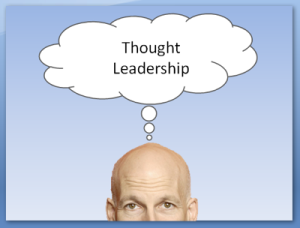Fashions change.
This cliché doesn’t apply just to hemlines and jeans, but to business as well. Anyone who claims that business is all about logic and data needs to get a reality-check; Marketers are perhaps the worst offenders here, much to their detriment. Of late, Marketers have suffered from a deep alienation from the real essences of their profession and we hope that 2018 will usher in a return to sanity.
This alienation – or departure from sanity in Marketing- stems from the over-indexing on Data and Measurement. While this sounds strange, even counterintuitive and heretical, it stands the test of logic and does not require a deep knowledge of Marketing to understand. Data and Measurement are no doubt valuable but they can also be the refuge of scoundrels.
The key in the above paragraph is the term “over-indexing.” In other areas of life, the tendency to over-index is called zealotry. In Marketing, the zealotry of measurement has created an untenable situation in which Marketing is asked to be as resilient as Physics or Mathematics; So too are Marketers, who feel forced to conform to the fashions of the day. For the past decade or so, the fashion has been “Performance Marketing” or, in a wild conflation of strategy and channel, “Digital Marketing.”
The genesis story here is a good one. Marketing for a long time appeared to be a cocktail of guesses mixed with a dose of manipulation. Organizations started to get frustrated with the lack of predictability and rising costs associated with Marketing and the ecosystem of agencies and media companies that had to be invoked when even considering bringing a product, service, or brand to market. Theories of consumer reception abounded, but the overall logic of Marketing appeared to be something akin to “do it and it will work.” Since no company could afford to shut off all Marketing, they continued in an inertial frame for decades.
Then came the Internet. Almost overnight- or so it seemed- behavior patterns changed. In addition, the almost infinite real estate and low cost of replication on the Internet, allowed for a completely different cost structure for Marketing. Completing the hat-trick was the fact that digitized Marketing can be “revved” quickly and tests of efficacy can be run in record time. A heady mix indeed!
And for a while it seemed great. Marketers could “go to market” quickly and bypass the usual middle-men.
Soon, however, the false “quants” took over and started writing how Marketing was both a “Science” and “Predictive.” Tomes could be written about the false attribution that plagued the marketing scene with the eminent measurability of Digital Marketing. We neglected Pater Semper Incertus Est.
Marketers new to the profession became one-channel ponies. They only knew Digital Marketing. They also grew up under the totalitarianism of measurement. They believed in the falsity of attribution and hewed only to the channels that provided an easy story for attribution.
Lo and behold, pundits declared the demise of “traditional” marketing. Some said TV was dead. Others eulogized radio. Still others print and outdoor. Digital Marketing was ROI Marketing and ROI Marketing was King (forgive the pun!)
The zealotry created real problems for real Marketers. First, they were subjected to Wall Street-type time-frames. What would in a sane world take a year, had to be measured in weeks or months. Second, the need to show ROI created a channel bias in which they were forced to market in only those channels which were eminently measurable. Third, they lost the Art which defined Marketing and chose, instead, to genuflect at the altar of a false science. CMOs lost their jobs in 18 months because they could not prove the ROI they agreed to. Marketing lost its way.
Fast forward to now.
Are Marketers ready to reclaim their profession? Are they ready to bring back that Evergreen-yet-needs-to-be-
We predict that 2018 will be the year in which Marketers re-embrace the notion of managing a portfolio of bets, of which some are measurable and others are not. The rush to measurement restricts the channels Marketers pick to engage with, not unlike a Chef with an infinitude of ingredients but only one ladle and one pan with which to create a gourmet meal.
The portfolio will no doubt contain elements of Digital Marketing but will also likely concentrate on what the current and future audience really needs and could, thus, index on physical marketing, TV, Radio, Outdoor, even Print. Who knows. Why discount ideas and channels a priori?
Ironically, the zealotry around measurability and ROI lands Marketers in an ironic soup- they restrict themselves from generating real ROI by thinking of it as an input and not as an outcome.
All fashions have their arc. It’s high time we reclaim Marketing from the ROI zealots and re-engage with the world as it is and as it could be.
Guest post by:
Romi Mahajan, Blueprint Consulting
Steven Salta, Agilysys








